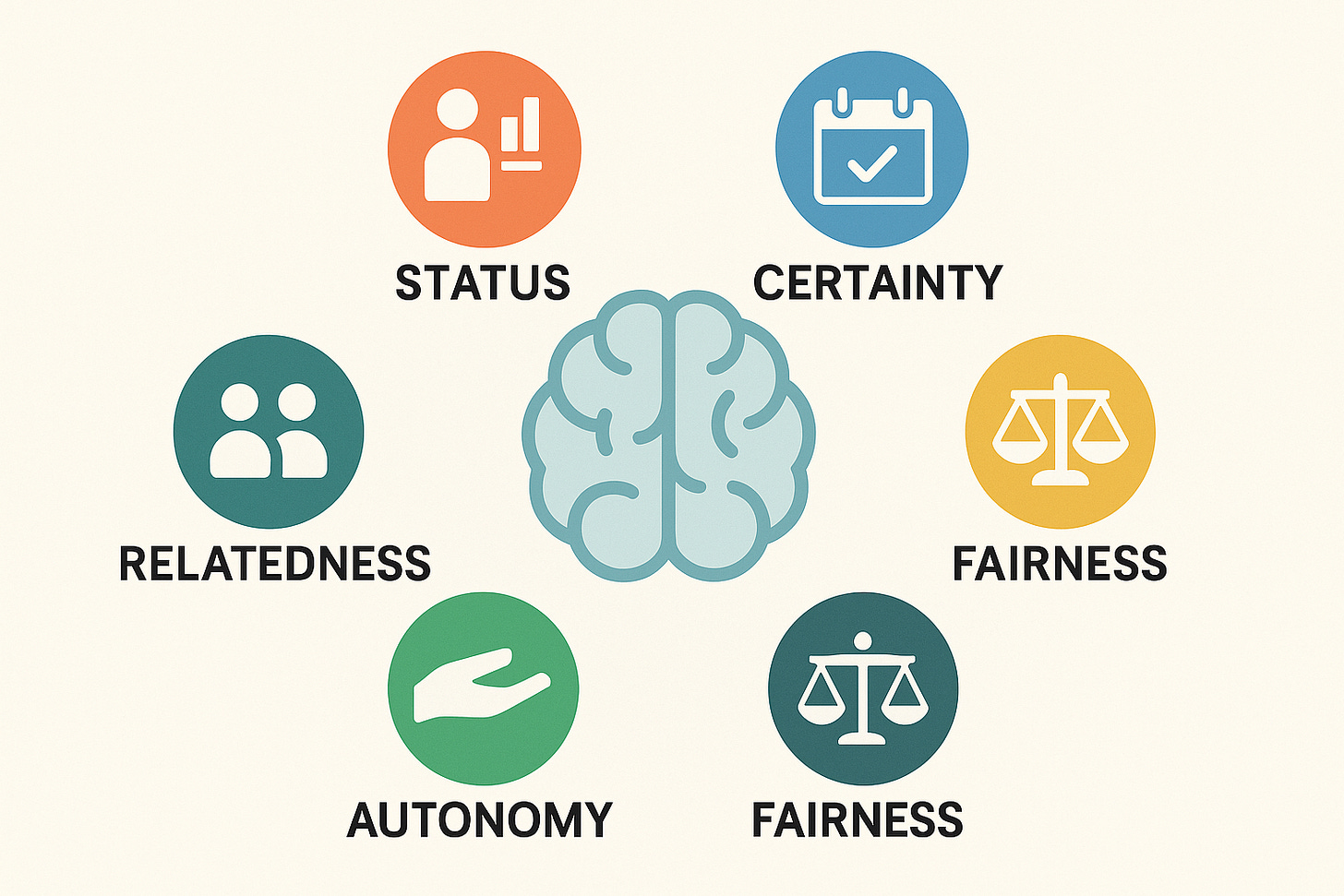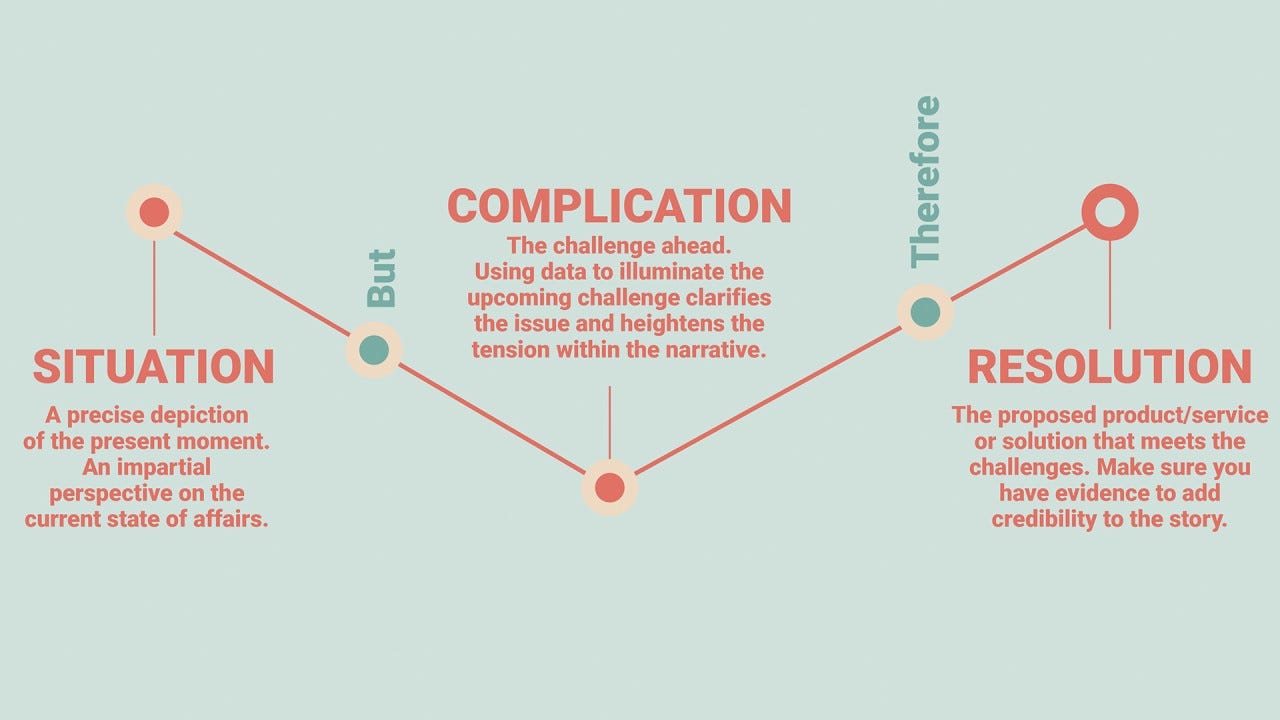Thoughts For The Week - 2025.10.19
The SCARF Model, The Hill Model, The Situation-Complication-Resolution Framework
Lots of models this week:
SCARF. A structured way to analyse why people in your team may be resisting change
The Hill Model: A visual guide to help give context of where you are with tasks
Situation-Complication-Resolution Framework: A structured approach for you to explain and push your proposed solution.
1. The SCARF Model
Why SCARF Matters in the Workplace
The SCARF model gives leaders and teams a language for understanding why people resist change, shut down during feedback, or disengage from collaboration.
The SCARF model comes from David Rock. Nigel Dessau’s post gives an excellent overview with examples of how to apply this in the work setting to improve your leadership. If people are resisting change or unhappy chances are it can quickly be analysed as related to one or more of these five categories: Status, Certainty, Relatedness, Fairness (SCARF). Going through this list provides a quick list with objective naming so you can get to the bottom of the problem.
Takeaway Nugget 1: If you or someone in your team is not happy then do a quick SCARF check. Is there something off with Status, Certainty, Autonomy, Relatedness or Fairness?
2. Shape Up: Work is like a hill
Basecamp’s Shape Up Methodology provides a toolbox full of techniques that you can apply in your own way to your own process for delivery. It’s possible to use individual tools and techniques to help your project even if you don’t use everything.
Today, I’d like to introduce you to Scopes on the Hill
Every piece of work has two phases. First there’s the uphill phase of figuring out what our approach is and what we’re going to do. Then, once we can see all the work involved, there’s the downhill phase of execution.
Often as engineers we’re asked to give estimates. Estimates are difficult in the best of times but can verge on impossible when you’re on the upward part of the hill and still figuring out what you need to do. The hill metaphor is a great way to talk to stakeholders. It also highlights the importance of very quickly planning further analysis or proof of concepts in order to reduce risk. You need to move yourself to the top of the hill so that you know what you need to do. Only once you’re at the top of the hill do you have a realistic chance of estimates with a reasonable amount of accuracy.
Another tip is to always break tasks down. At the start of a project focus on the tasks that are still on the upward part of the hill. If you split a task, may be certain subtasks are already at the top, but other’s aren’t. These are the ones that need work.
Takeaway Nugget 2: If you’re having difficulty estimating tasks, chances are you’re still figuring out what to do. Ask yourself “What do I need to do to get to the top of the hill?”
3. SCR Framework - Situation Complication Resolution
If you’re trying to affect change and push a solution it helps to provide context and be precise. It’s common to see vague emails, without much context, where it’s not clear what the author wants to do or wants you to do.
Using this simple structure helps you to create a structured written description.
Situation (S) – Provides the prior context or background necessary to understand the topic. It introduces the subject and explains why it matters.
Complication (C) – Presents the problem that has arisen, explaining why it’s significant and why the audience should pay attention.
Resolution (R) – Offers solutions or recommendations to address the problem.
What’s more this fits perfectly as the first part of a story telling narrative. Check out the details in Digvijay Singh Bhadouria post…
Takeaway Nugget 3: Next time you’re requesting something or pushing your idea use the Situation-Complication-Resolution structure.
Have a great week.






